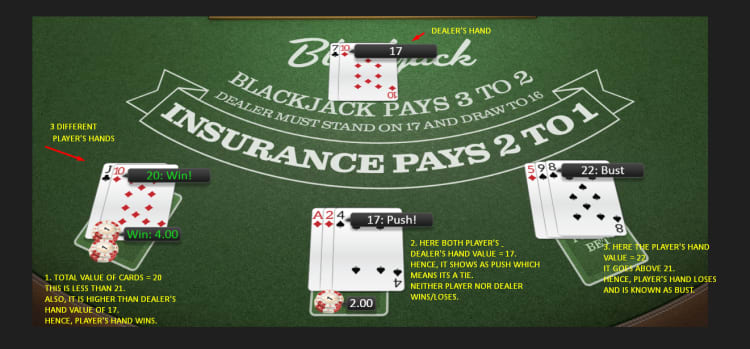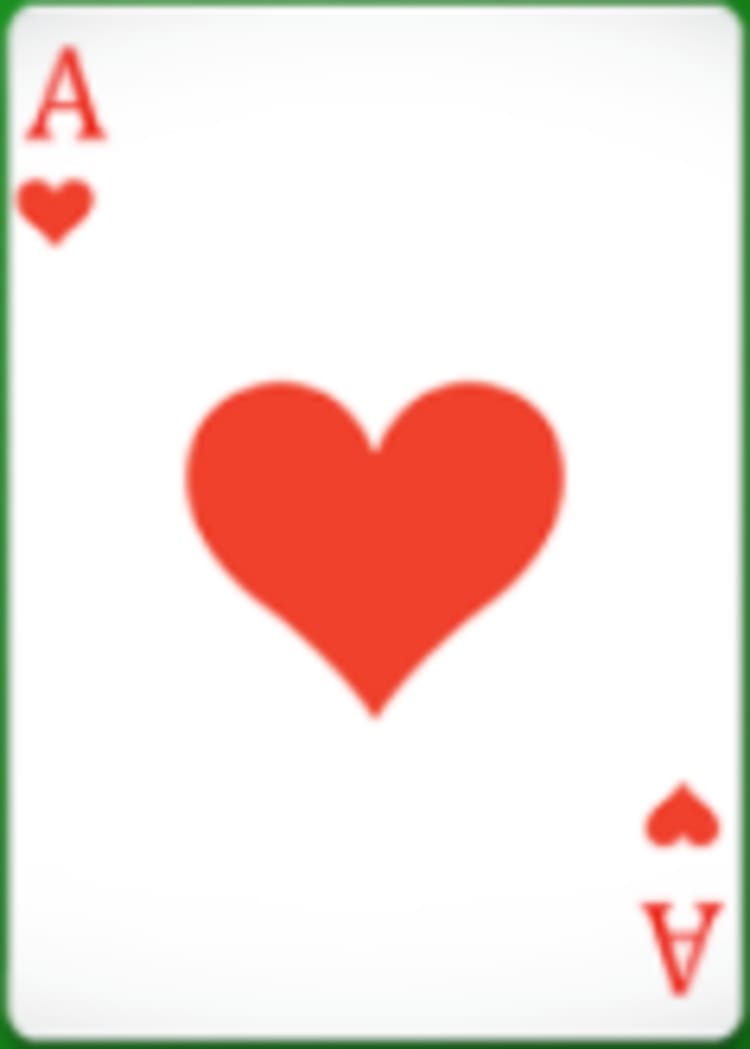Online Blackjack Casino Game
Blackjack is one of the most loved online casino games among punters across the globe. And there are several good reasons for the players to prefer this game.
First of all, blackjack is a game that combines the elements of skill and luck, so if you know the game well, you can increase your advantage over the dealer. Secondly, the game has one of the lowest theoretical house edges of all casino games, which puts you in a good position to win big payouts. And finally, if you pick a blackjack game with optimal rules and use the appropriate blackjack playing strategy, you can significantly affect the game’s house edge.
TOP BLACKJACK CASINOS IN INDIA
| 1 |

|
Betway |
Free Bet
100% up to ₹4,000
|
|
Visit New Customers Only. 18+. T&Cs Apply. | |
| 2 |

|
Parimatch |
Welcome Bonus
150% up to ₹30,000
OCB Exclusive PROMO CODE: PM80
|
|
Visit New Customers Only. 18+. T&Cs Apply. | |
| 3 |

|
1xBet |
Welcome Bonus
120% up to ₹43,000
Exclusive with OCB - USE CODE: OCB2024
|
|
Visit New Customers Only. 18+. T&Cs Apply. | |
| 4 |

|
Maharaja Fortune |
Welcome Bonus
100% up to ₹10,000
|
|
Visit New Customers Only. 18+. T&Cs Apply. | |
| 5 |

|
Bet365 |
Welcome Bonus
15% up to ₹4,000
|
|
Visit New Customers Only. 18+. T&Cs Apply. | |
| 6 |

|
Rajabets |
Welcome Bonus
150% up to ₹1,00,000
|
|
Visit New Customers Only. 18+. T&Cs Apply. | |
| 7 |

|
10CRIC |
Welcome Bonus
150% up to ₹32,000
Exclusive OCB Bonus Code: 10WELCOME
|
|
Visit New Customers Only. 18+. T&Cs Apply. | |
| 8 |

|
Casumo |
Welcome Bonus
100% up to ₹10,000
|
|
Visit New Customers Only. 18+. T&Cs Apply. | |
| 9 |

|
Satbet |
Welcome Bonus
100% up to ₹10,000
|
|
Visit New Customers Only. 18+. T&Cs Apply. | |
| 10 |

|
Dafabet |
Welcome Bonus
200% up to ₹20,000
Weekly Cricket Cashback - 10% up to ₹30,000
|
|
Visit New Customers Only. 18+. T&Cs Apply. |
Video Review of playing Blackjack online
Learn how to play Freebet Blackjack
How to Play Blackjack?

(Source: MegaPari Official Site- European Blackjack by Betsoft)
The goal of a Blackjack game is to beat the dealer’s hand and avoid “busting”. In a game of Blackjack, the highest-ranking hand is a 21. Any player or dealer who goes over this value will “bust”, i.e., lose the bet.
So, the first objective is to avoid going bust, while the second, and just as important, is to beat the dealer by getting a higher-ranking hand. If neither you nor the dealer gets a 21, whoever has the higher hand will win the bet.
Signup to ParimatchPLAYER’S MOVES IN BLACKJACK 21 GAME
When you start playing, both you and any other player at the table will receive two cards, while the dealer will have only one face-up. Once you do, you will have the following options, depending on the table rules:
- Hit: Receive another card from the dealer.
- Stand: Choose to stand pat with the hand you have.
- Double Down: Double your bet and receive one more card.
- Split: When you have a pair, you can also choose to double your bet and split your two cards into two separate hands. You will then get one card for each hand, and you can then decide to stand, hit, or double down both hands, per the rules.
- Surrender: Most casinos allow you to surrender your first hand and receive half of your wager back. There’s also a late surrender option in some variations, which is allowed when the dealer has a 10 or an Ace, i.e., high chances of getting a Blackjack.
Hand Values in Blackjack Game Online

|

|

|
| Numbers from 2-9 of any suit bear face value. | Ace is equal to 1 or 11. | 10, Jack, Queen, and King hold the value of 10. |
When you play casino blackjack online, these cards bear the following values:
- All the number cards are counted as is. This includes 2-9 numbers of any suit (Hearts, Spades, Diamonds, and Clubs).
- The Ace can be counted as 11 or 1.
- Every 10 and face card is counted as 10. Face cards include King, Queen, and Jack.
The value of each hand is the sum of all cards in the hand. So, if you have a hand of K – 7 – A, your hand’s value will be 18 (10+7+1), while a hand of 5-9 will be a 14, etc.
The value of the Ace cards is usually counted according to the hand. So, if your Ace could make you go “bust” when counted as 11, its value will be considered as 1, and vice versa.
Blackjack- Hard Hands & Soft Hands
As mentioned above, Ace can be considered as 1 or 11, depending on your cards. Based on the ace, there are two types of hands when you play Blackjack: Hard and Soft.
| Blackjack Hard Hands | Blackjack Soft Hands |
|---|---|
| A “hard” hand is one without an Ace, or one where the Ace is counted as 1. | A “soft” hand is where Ace is valued as 11. |
| For example, a hand of K-4-A-2 is considered a hard 17, just as a hand of 10-7. | For example, if you have a hand of A-6, this is called soft 17. |
RULES FOR BLACKJACK ONLINE GAME
When speaking of Blackjack rules, most people mean the rules that apply to how the dealer plays his hand and which actions you are allowed to perform. The more liberal the rules, the more chances you have of lowering the casino’s house edge.
You can also enjoy blackjack games on dedicated mobile apps. Try it out!
So, what exactly are top blackjack rules? Well, in short, the following are the most important rules to look out for:
- Doubling Down: Most blackjack casinos will allow you to double on any two cards, but some only allow doubling on hands of 9, 10, or 11. Being able to double on any hand is better than the second option.
- Doubling after splitting: Some casinos don’t allow you to double down after you’ve split a hand, which is not a very good rule and one that’s becoming rarer in today’s industry.
- Re-splitting aces: Some Blackjack versions allow you to split a pair of aces, while others don’t. The more liberal rules are always better.
- Re-splitting hands: Casinos usually allow you to re-split up to 2 hands, but some offer better rules that allow up to 3-4 hands.
- Dealer stands/hits on Soft 17: Depending on the version, the dealer might hit (draw another card) or stand on “soft” hands of 17. Naturally, it’s better to have the dealer stand rather than hit.
Different Online Blackjack Variations
When it comes to variety, you will literally be spoiled for choice in today’s online casinos, as some offer dozens of different Blackjack variations. Most of these blackjack games will be similar to one another, with minor differences in the bet sizes and certain rules.
You can also access exciting bonus deals and other promotions at some of the top online casinos to play blackjack.
The following are only some of the more popular variations of online Blackjack card game:
- Spanish 21: One of the most popular versions among land-based casinos, the Spanish 21 is played with decks that have the 10 cards removed. To compensate for the player's disadvantage, Spanish 21 games normally have liberal rules like re-splitting aces, late surrender and doubling after splitting (even aces). There are also different payout tables for different Blackjack hands.
- Vegas Strip: The classic game of Blackjack as it was commonly found on the Strip. Vegas Strip rules allow for splitting up to 3 times, doubling after a split, and doubling on any two cards, among other things. Signup to Fairplay
- European Blackjack: A 4-8 deck variant with insurance and 3:2 payouts, as opposed to 6:5 payouts available in some variations. Doubling is only allowed on hard 9-11s, and you can double after splitting.
- Multi-hand Blackjack: A popular blackjack online version that allows you to play several hands at a time.
- Triple 7s Blackjack: A Blackjack card game with a progressive jackpot. The biggest jackpot can be won by placing a side bet on you getting three 7s in the same suit, with other jackpots available for other combinations of 7s.
- Blackjack Switch: A Blackjack variation that allows you to place double bets and thus play double hands right from the start. You can also switch the second card in both hands between the hands, thus the name. However, this version also involves getting even money when you get a Blackjack and considers a dealer’s 22 as a “push”.
The Importance of Blackjack Strategies
While it’s true that online Blackjack real money has one of the lowest theoretical house edges among casino games, it’s also true that the low house edge is only possible if you know how to play very well. In other words, with each wrong move you make, you only give the casino more advantage.
That’s why Blackjack strategy are considered vital to any player looking to do well at the Blackjack table, be it a beginner or a pro. The blackjack basic strategy is the compilation of the right responses for specific card combinations, which were produced by complex mathematical computer calculations. And thus, need to be learned by heart and always followed, no matter what.
The following is an example of an optimal and basic strategy blackjack. It applies to multiple Blackjack variations. However, you are advised to look for the exact strategy that applies to the variation and rules you are playing with for the best results. For example, if you’re playing a 6-deck game where the dealer stands on soft 17, and re-splitting is allowed, use that exact chart, and so on.
When to Hit?
| Your Cards | Dealer's Cards |
|---|---|
| Hard 4-8 (4, 5, 6, 7, 8) | 2-A (2, 3, 4, 5, 6, 7, 8, 9, 10, A) |
| Hard 9 | 7-A |
| Soft 13-15 | 2-A |
| Soft 16-18 | 7-A |
When to Stand?
| Your Cards | Dealer's Cards |
|---|---|
| Hard 12-16 | 2-6 |
| Hard 17-21 | 2-A |
| Soft 19-21 | 2-A |
When to Double Down?
| Your Cards | Dealer's Cards |
|---|---|
| Hard 9 | 2-6 |
| Soft 16-18 | 2-6 |
When to split?
| Your Cards | Dealer's Cards |
|---|---|
| Pair of 2s, 3s, 6s, 7s or 9s | 2-6 |
| Pair of Aces or 8s | Any card |
| Avoid splitting 10s, 4s and 5s | |
BLACKJACK ONLINE REAL MONEY CONCLUSION
There are various versions available to play online blackjack. You can try free online blackjack games to practice the blackjack strategy. Some top casinos where you can play online blackjack free include MegaPari, Shangri La, Parimatch, 10CRIC, and Jungle Raja.
Remember, you can play free blackjack online with a software version of 21 Blackjack. However, blackjack live games do not have the option for a demo game. So, practise in software versions and understand the rules of blackjack before playing for real money.
Signup to PureWin


